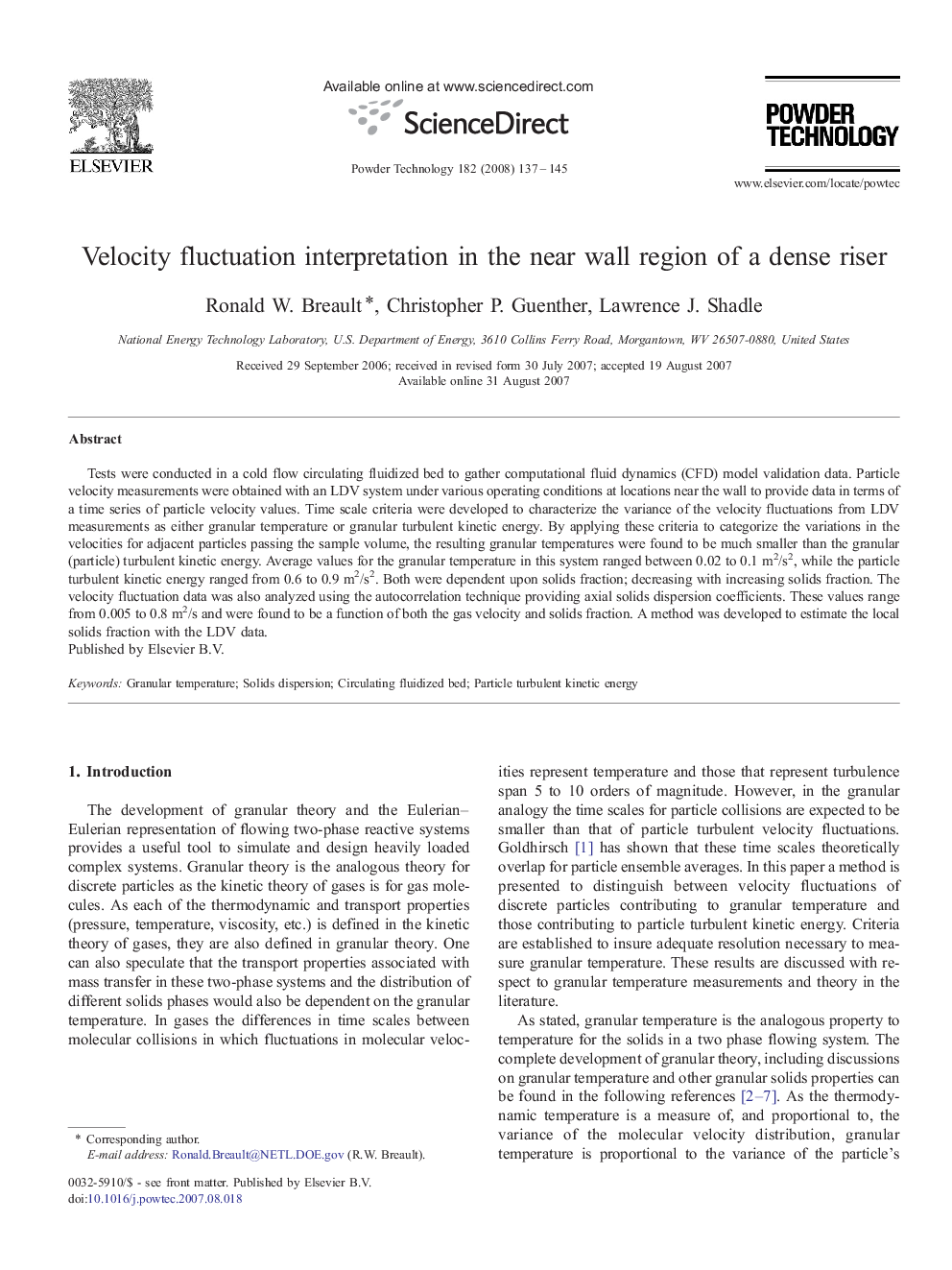| کد مقاله | کد نشریه | سال انتشار | مقاله انگلیسی | نسخه تمام متن |
|---|---|---|---|---|
| 239166 | 465802 | 2008 | 9 صفحه PDF | دانلود رایگان |

Tests were conducted in a cold flow circulating fluidized bed to gather computational fluid dynamics (CFD) model validation data. Particle velocity measurements were obtained with an LDV system under various operating conditions at locations near the wall to provide data in terms of a time series of particle velocity values. Time scale criteria were developed to characterize the variance of the velocity fluctuations from LDV measurements as either granular temperature or granular turbulent kinetic energy. By applying these criteria to categorize the variations in the velocities for adjacent particles passing the sample volume, the resulting granular temperatures were found to be much smaller than the granular (particle) turbulent kinetic energy. Average values for the granular temperature in this system ranged between 0.02 to 0.1 m2/s2, while the particle turbulent kinetic energy ranged from 0.6 to 0.9 m2/s2. Both were dependent upon solids fraction; decreasing with increasing solids fraction. The velocity fluctuation data was also analyzed using the autocorrelation technique providing axial solids dispersion coefficients. These values range from 0.005 to 0.8 m2/s and were found to be a function of both the gas velocity and solids fraction. A method was developed to estimate the local solids fraction with the LDV data.
Tests were conducted in a cold flow circulating fluidized bed. Time scale criteria were developed to characterize the variance of the velocity fluctuations from LDV measurements as either granular temperature or granular turbulent kinetic energy. Average values for the granular temperature in this system ranged between 0.02 to 0.1 m2/s2, while the granular turbulent kinetic energy ranged from 0.6 to 0.9 m2/s2. The velocity fluctuation data was also analyzed using the autocorrelation technique providing axial solids dispersion coefficients that ranged from 0.005 to 0.8 m2/s.Figure optionsDownload as PowerPoint slide
Journal: Powder Technology - Volume 182, Issue 2, 22 February 2008, Pages 137–145